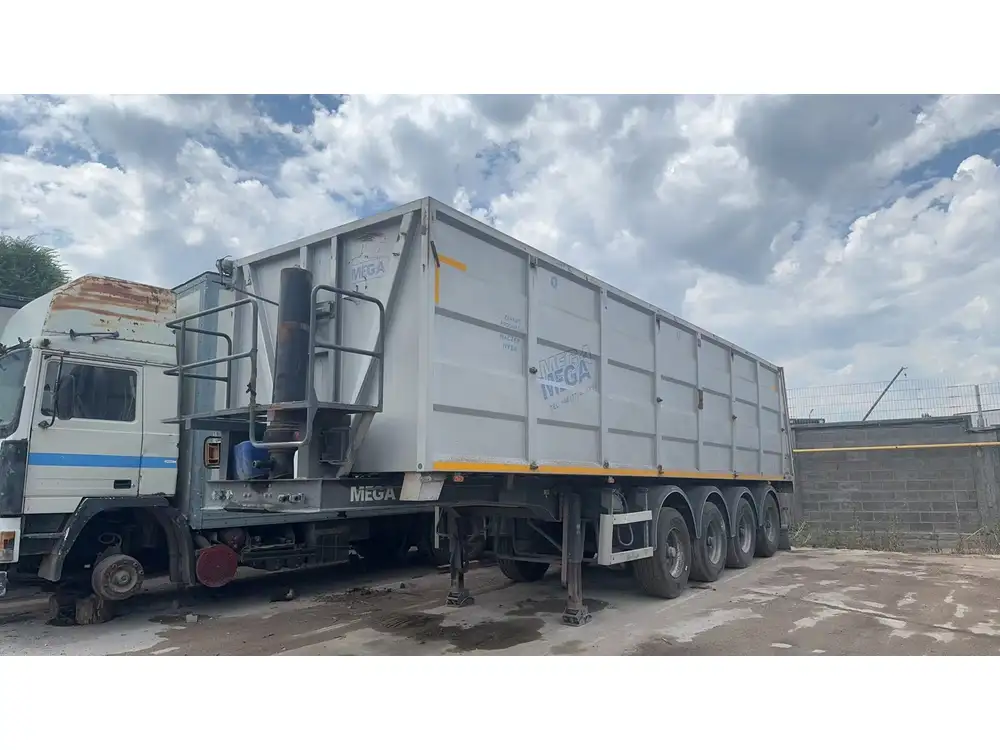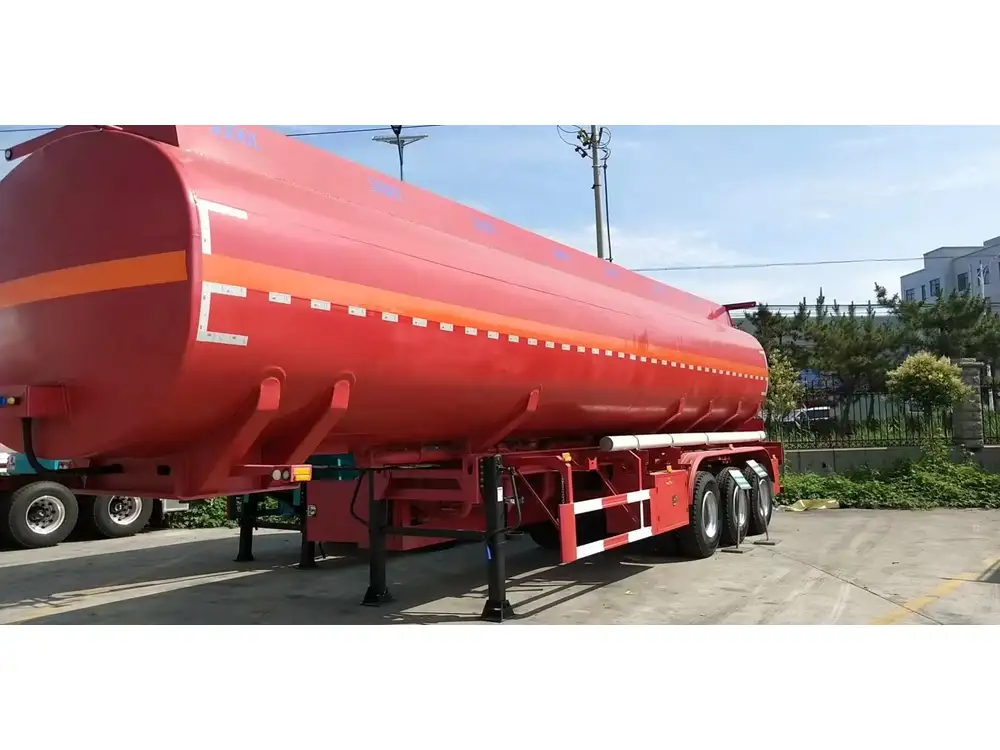Removing a semi-trailer box is a task that requires precision, safety, and an understanding of the equipment involved. Whether you’re aiming to replace a damaged box, upgrade to a new model, or simply perform maintenance, this guide serves as a detailed resource to facilitate a successful removal. Throughout this article, we will walk you through the process step-by-step, ensuring that you are equipped with the knowledge necessary to carry out the removal safely and efficiently.
Understanding the Semi-Trailer Structure
It is crucial to have a basic understanding of a semi-trailer’s structure and components before diving into the removal process. A semi-trailer typically consists of:
| Component | Description |
|---|---|
| Chassis | The base framework that supports the trailer box and axles. |
| Axles | The revolving shafts that hold the wheels; they bear the weight of the trailer. |
| Kingpin | A pivotal connection point that attaches the semi-trailer to the tractor. |
| Suspension | Systems that absorb shocks, maintaining stability and load integrity. |
| Wiring and Connectors | Electrical systems that enable lights and brakes to function. |
| Side Walls | Vertical panels that give the trailer structure and support for the loads. |
| Flooring | The surface within the box that carries the cargo. |
Having a comprehensive understanding of these components is essential for identifying how to safely decouple the trailer box from the rest of the vehicle.
Safety First: Essential Precautions
Safety should always be the top priority when undertaking the removal of a semi-trailer box. Prior to starting the process, ensure that you have:
Proper Personal Protective Equipment (PPE): This includes gloves, safety goggles, and steel-toed boots to protect against accidents.
A Safe Workspace: Ensure that the area where you’ll be working is clear of obstacles and that the trailer is parked on a level surface.
Tools and Equipment: Gather all necessary tools beforehand. Essential items include:
- Ratchet and socket set
- Wrenches
- Jacks (preferably hydraulic)
- Safety stands
- Torque wrench
- Screwdrivers
- Electrical tape
Knowledge of Emergency Procedures: Know how to handle potential accidents or emergencies, including spills or equipment failures.

Step-by-Step Process for Removing a Semi-Trailer Box
Step 1: Secure the Semi-Trailer
Begin the removal process by ensuring that the semi-trailer is securely positioned. This involves the following:
- Chock the Wheels: Place wheel chocks in front of and behind the rear wheels to prevent movement.
- Engage the Parking Brake: This additional safety measure ensures that the trailer remains in a stationary position throughout the removal.
- Disconnect the Tractor: If applicable, detach the semi-trailer from the tractor by unhitching the kingpin.
Step 2: Disconnect Electrical and Air Lines
Before completely detaching the box, disconnect all electrical components and air lines. This includes:
- Wiring Harness: Locate the wiring harness typically found at the front end of the box. Unplug it carefully to avoid damage to the connectors.
Air Lines: If your trailer is equipped with air brakes, disconnect the air lines connected to the glad hands. Ensure that you relieve the air pressure before removing the lines.
Note: Keeping a record of connection locations or taking pictures can help during reassembly.

Step 3: Prepare for Box Removal
With the electrical and air lines disconnected, you can start preparing for the actual removal of the box:
- Inspect Connections: Verify that all connections (physical and otherwise) are clear, including support brackets that may not be immediately noticeable.
- Support the Box: Use hydraulic jacks to elevate the box slightly off its supports. Position safety stands beneath the frame where it will bear the load during removal.
Step 4: Remove the Bolts and Supports
Once the box is elevated and securely supported, proceed to remove the bolts and supports. This typically involves:
- Identifying Bolts: Locate all bolts that connect the box to the chassis. There may be several on each side, so ensure you find and mark them.
- Using the Proper Tools: Apply the appropriate-sized ratchet or wrench to unscrew the bolts. If they are rusted or stuck, a penetrating oil may help.
- Storing Hardware Safely: As you remove bolts and washers, store them in a labeled container to avoid losing them.
Step 5: Detach the Semi-Trailer Box
With all support structures and connections removed, you are ready to detach the semi-trailer box:
Lower the Trailer Box: Carefully allow the hydraulic jacks to lower the box to the ground. Ensure that no one is underneath or close by during this process.
Assess Stability: Once lowered, check that the trailer box is stable and secure on the ground.

Step 6: Inspect and Clean Up
Now that the box has been successfully removed, perform a final inspection and clean up the work area:
- Inspect the Chassis: Check for any signs of damage or wear that may need addressing before installing a new box.
- Clean Tools and Equipment: Ensure tools and equipment are cleaned and returned to their respective places.
Potential Issues During Removal
While the step-by-step guide provides a structured process for removing a semi-trailer box, it is vital to remain alert to potential complications:
Rusty or Stuck Bolts: These can be challenging to remove and may require additional tools or techniques such as heating the bolts to loosen them.
Uneven Weight Distribution: Ensure weight distribution remains even throughout the removal process to avoid tipping or instability in the box.
Mechanical Failures: Regularly inspect hydraulic jacks and other equipment for defects before use to prevent accidents.
Accidental Damage: Being aware of surrounding structures and vehicles throughout the removal process is essential to avoid unintended damage.
Conclusion
Successfully removing a semi-trailer box may seem daunting, but with the right knowledge, preparation, and safety precautions, the process can be streamlined and efficient. Whether for maintenance, replacement, or storage, the key is to systematically follow each step while being attentive to safety and potential complications.
By employing this comprehensive guide, any individual tasked with removing a semi-trailer box can do so effectively, reducing the risk of error and promoting a successful and safe operation. Always remember that planning and understanding the equipment at hand are paramount to ensuring a smooth removal process.
This guide is designed to not only facilitate effective trailer box removal but also serve as a reference point for users seeking practical and safe removal techniques. By following this structured approach, manufacturers and operators alike can optimize their semi-trailer operations with efficacy and safety at the forefront.



